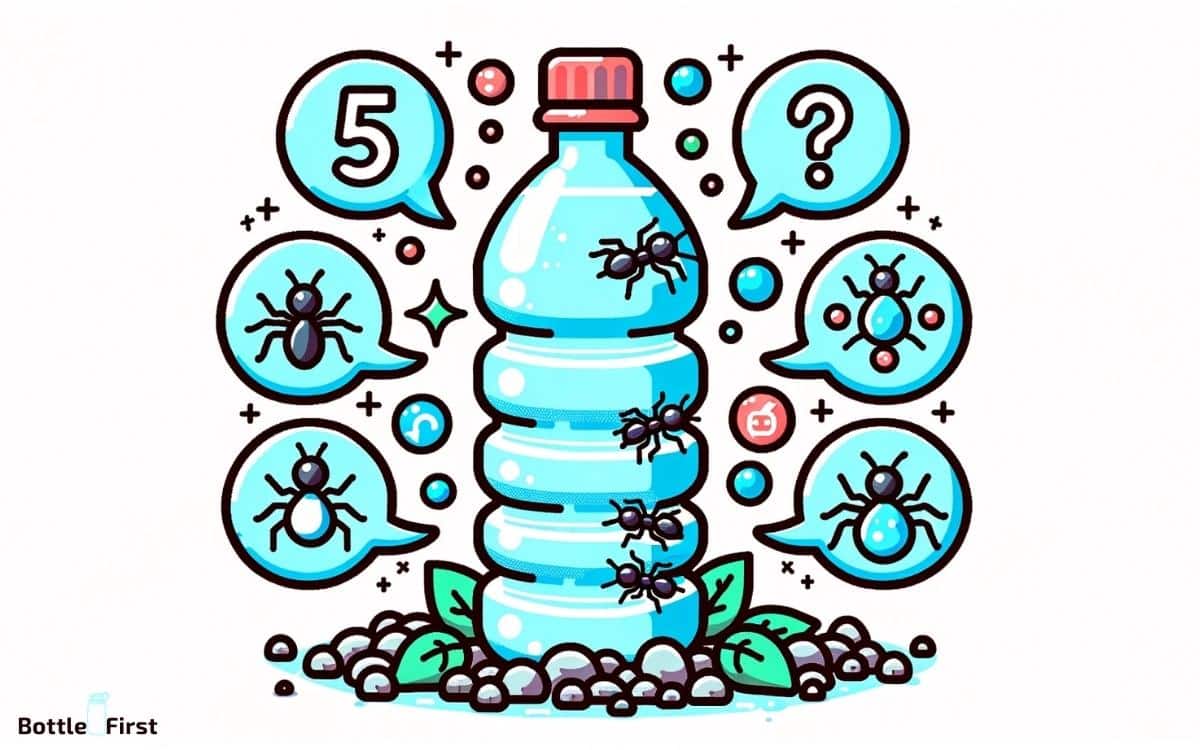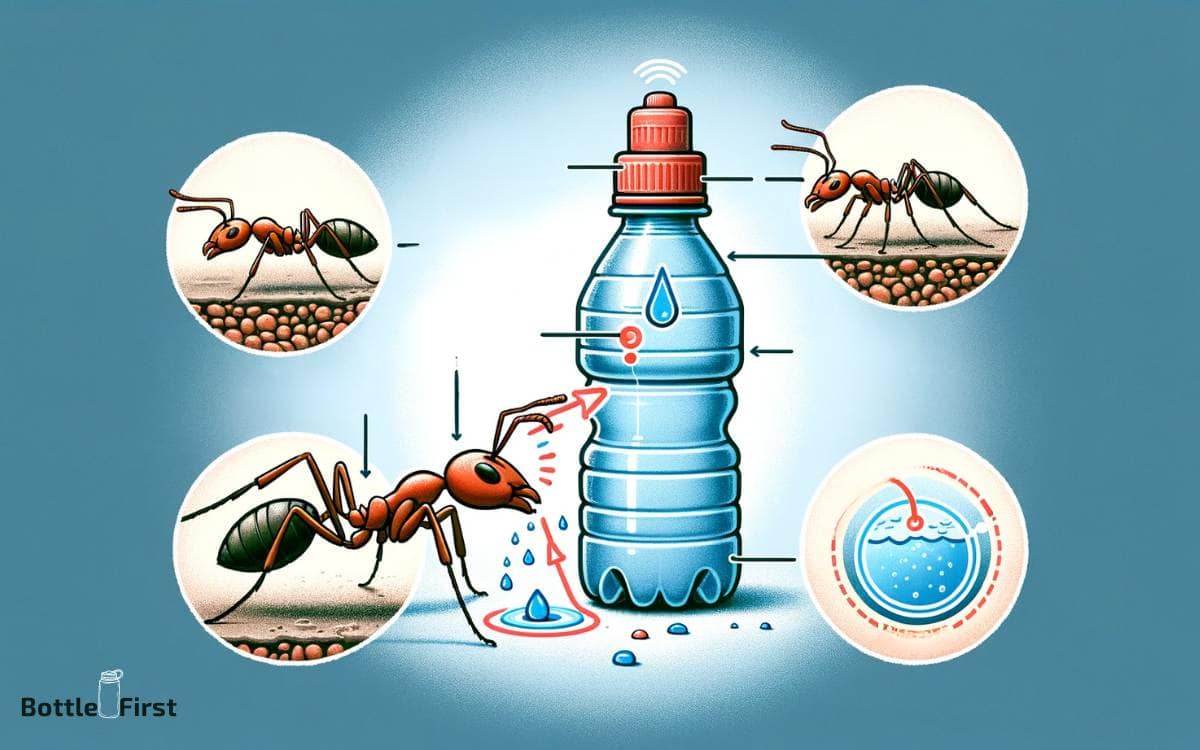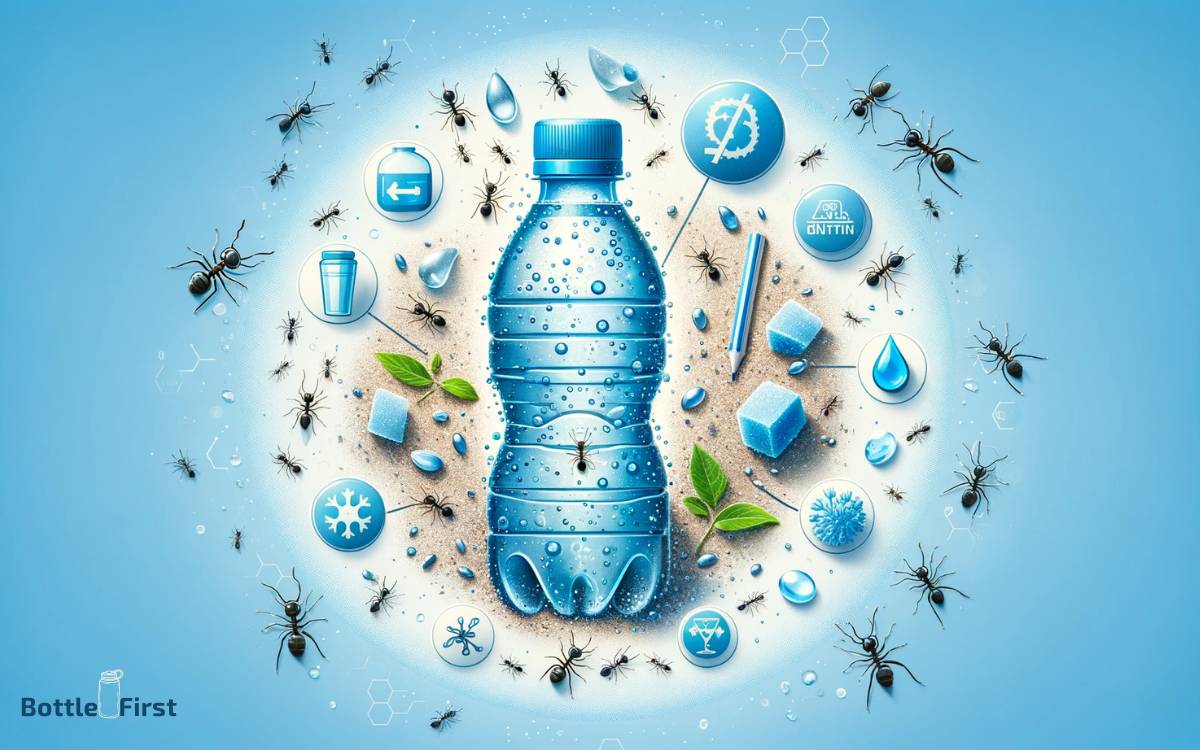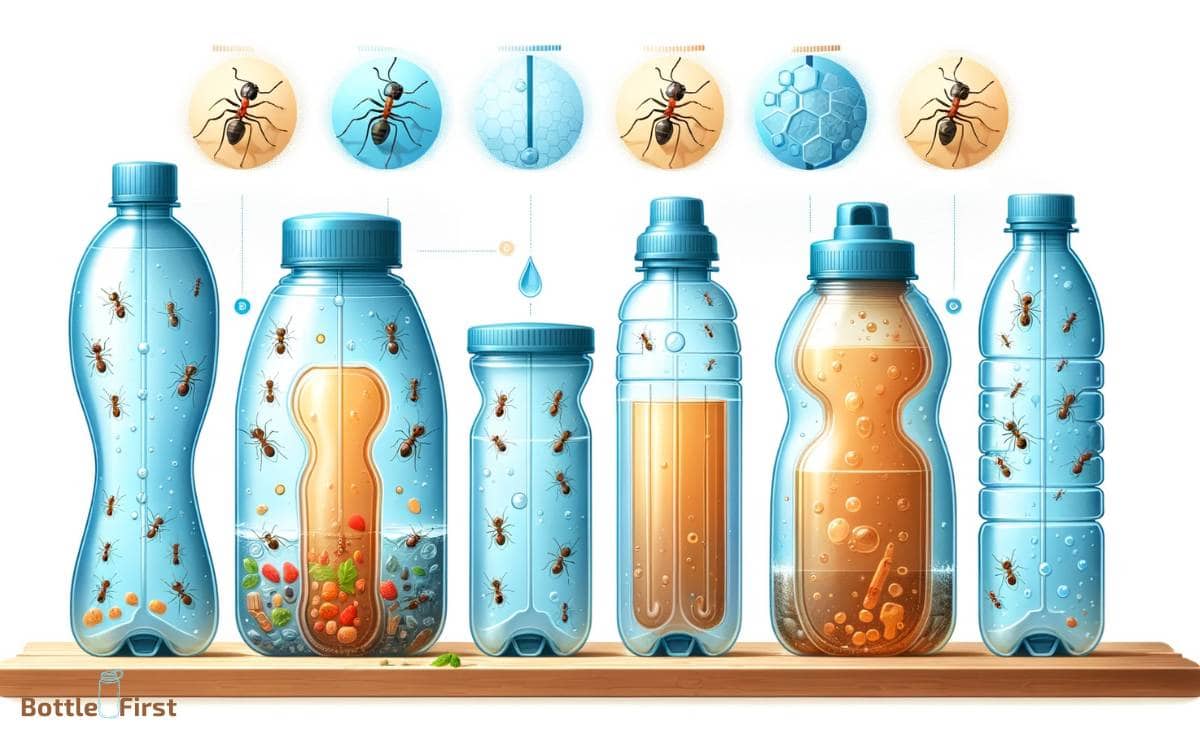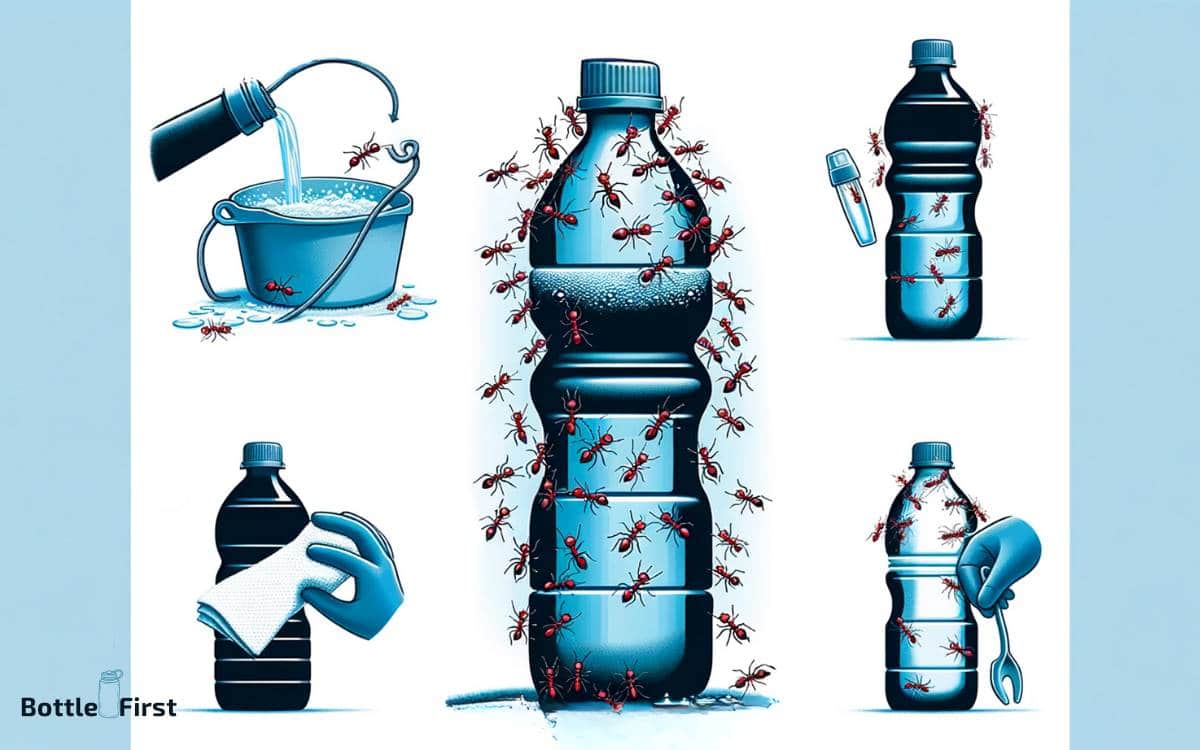Why are Ants Attracted to My Water Bottle? 5 Reasons!
Ants are often attracted to water bottles due to their search for hydration. During warmer months or in dry climates, ants require water to survive and can sense the moisture in water bottles, making them a target for these tiny insects.
Ants are equipped with highly sensitive receptors that allow them to detect moisture sources from a distance. Water is as vital to ants as it is to humans, especially in conditions where it is scarce.
When you use a water bottle, you might leave residue or spill a few drops on the outside, which can evaporate and leave a scent trail that ants can follow.
Factors that make water bottles attractive to ants include:
In summary, ants are attracted to the water and potential food sources that water bottles can represent.
By understanding why ants are attracted to water bottles, we can take proactive steps to prevent these unwelcome insect guests.
Key Takeaway
5 Reasons: Ants Are Attracted To Water Bottles
| Reasons | Explanations |
|---|---|
| Dehydration | Similar to humans, ants require water for survival. If their normal water sources are scarce, they may be drawn to your water bottle. |
| Sugar and Food Particles | If your water bottle was previously used for any sugar or food-based drinks, it may attract ants. Ants are highly attracted to sugary substances. |
| Odor | Ants have a keen sense of smell. If they sense any scent coming from your water bottle, they may be attracted to investigate. |
| Shelter | In some cases, ants can use small, enclosed spaces like a water bottle as a temporary shelter or base. |
| Humidity | Some species of ants are attracted to humid environments. The moisture in a water bottle can create a desirable habitat for these ants. |
Understanding The Attraction Mechanism
Ants can be pesky little creatures, especially when they invade our personal spaces, such as our water bottles. But have you ever wondered why ants are so attracted to your water bottle?
Understanding the attraction mechanism behind this phenomenon can help us better deal with these unwanted visitors.
We will explore why ants are drawn to water sources, the role of pheromones in attracting ants, and how ants detect water bottles.
Why Ants Are Drawn To Water Sources
Ants are constantly on the lookout for sources of water, and your water bottle is like a beacon calling out to them.
- Hydration: Just like any other living organism, ants need water to survive. They are instinctively attracted to water sources to quench their thirst and maintain their hydration levels.
- Survival: Ant colonies thrive on moisture, and finding a water source ensures the survival of the entire colony. By visiting your water bottle, they are securing their long-term survival.
Role Of Pheromones In Attracting Ants
Pheromones play a crucial role in attracting ants to your water bottle. These chemical signals act as a communication system within ant colonies, guiding ants to food sources and water.
Here’s how pheromones come into play:
Trail marking:
Ants leave behind a trail of pheromones as they move, creating a path for other ants to follow. If even a few ants discover your water bottle, they will leave behind a trail of pheromones, attracting more ants to the source.
Alarm signals:
When ants stumble upon a water source like your bottle, they may release alarm pheromones to alert other ants in the colony.
This signals to other ants that there is a valuable resource nearby, encouraging them to investigate further.
How Ants Detect Water Bottles
Ants have remarkable senses that allow them to detect water bottles with ease.
Sense of smell:
Ants have an impressive sense of smell, allowing them to detect even the tiniest traces of moisture. They can pick up on the scent of water vapors emanating from your water bottle, guiding them towards it.
Sensing temperature changes:
Ants are sensitive to changes in temperature. Your water bottle, especially when filled with cold water, creates a temperature difference that ants can detect. They are naturally drawn to this variation.
Visual cues:
Despite their small size, ants have decent eyesight. They can spot the reflective surface of your water bottle, which stands out among their natural environment. This visual cue helps ants locate and navigate towards the water source.
Understanding the mechanisms behind ants’ attraction to your water bottle can help you take preventative measures to keep them at bay.
By sealing your water bottle tightly and keeping it away from areas prone to ant activity, you can enjoy a bug-free hydration experience.
Stay tuned for our next section on effective strategies to deter ants from invading your water bottle.
Factors That Make Water Bottles Attractive To Ants
Ants seem to have an uncanny ability to find their way to the most unexpected places, including your water bottle.
You may have wondered why they are so attracted to something as simple as h2o. Well, there are a few key factors that make water bottles quite appealing to these tiny creatures.
Sweetness Of The Beverage
Ants have a voracious sweet tooth, and they can detect even the faintest hint of sweetness.
Unfortunately, many of our favorite beverages, from sodas to fruit juices, contain sugar or other sweeteners that make them irresistible to ants.
- Sugary beverages are like a tasty treasure trove for ants.
- The scent of sweetness can travel a long way, catching the attention of nearby ants.
- Once an ant discovers a sugar-rich beverage, it leaves behind a trail of chemical pheromones for others to follow.
Water Bottle Design And Accessibility
Besides the allure of a sugary drink, water bottle design also plays a significant role in attracting ants.
- The small size and narrow opening of most water bottles make it easy for ants to crawl inside.
- Some water bottles have built-in straws or spouts that create a convenient pathway for ants to access the liquid.
- Ants can even squeeze through small cracks or openings in bottle caps to reach the water.
Temperature And Condensation
Ants are also drawn to water bottles due to factors related to temperature and condensation.
- Water bottles often accumulate condensation on their exterior due to changes in temperature or humidity.
- Ants are attracted to the moisture produced by condensation, mistaking it for a water source.
- The cool temperature of chilled water bottles can provide ants with a refreshing respite on hot days.
Ants are attracted to your water bottle for a variety of reasons. The sweet taste of sugary beverages, the design and accessibility of water bottles, and the presence of condensation all act as magnets for these tiny insects.
While it may be challenging to prevent ants from disturbing your thirst-quenching experience, being mindful of these factors can help minimize their attraction to your water bottle.
So, the next time you reach for your favorite drink, be prepared to share it with some curious ant visitors.
Tips To Prevent Ants From Being Attracted To Water Bottles
Ants are small insects that can be quite intruding when it comes to our personal space, especially when they’re attracted to something like a water bottle.
You might find yourself wondering why ants are so drawn to your water bottle and what you can do to prevent them from swarming around it.
In this section, we will discuss some helpful tips to keep ants away from your precious water bottle.
Keeping The Environment Clean And Dry
- Maintain cleanliness in the area where you keep your water bottle. Ants are attracted to leftover food crumbs or spills, so wiping down surfaces regularly can deter them.
- Eliminate any standing water near your water bottle. Ants are drawn to moisture, and by keeping the environment dry, you make it less appealing for them.
- Sweep or vacuum regularly to get rid of any food particles or crumbs that might have dropped on the floor. This will help prevent ants from being attracted to the area.
Properly Sealing And Storing Water Bottles
- Make sure your water bottle is tightly sealed when not in use. Ants can detect the scent of water and will be more likely to swarm around it if they can access it easily.
- Store your water bottle in airtight containers or cabinets to create a barrier between the ants and your water source. This will help prevent them from being attracted to it in the first place.
- Avoid leaving your water bottle uncovered for extended periods of time. If you’re outdoors, consider using a secure cap or keeping it in a bag to minimize exposure to ants.
Natural Deterrents For Ants
- Vinegar can be an effective natural deterrent for ants. Mix equal parts of vinegar and water and spray it around the area where you keep your water bottle. The strong smell will deter ants from coming near.
- Peppermint oil is another natural ant repellent. Mix a few drops of peppermint oil with water and spray it around the perimeter of your water bottle space. This will create a scent barrier that ants dislike.
- Cinnamon is known to repel ants as well. Sprinkle cinnamon powder in the area around your water bottle to deter them from approaching.
By following these tips, you can help prevent ants from being attracted to your water bottle.
Remember to keep the environment clean and dry, properly seal and store your water bottles, and utilize natural deterrents to keep those ants away.
What To Do When Ants Have Already Infested Your Water Bottle
Safe Removal Of Ants From The Bottle
If you’ve discovered ants infesting your water bottle, it’s crucial to handle the situation promptly and safely.
- Empty the bottle: Begin by carefully emptying the water bottle to avoid any spillage or contact with the ants.
- Avoid squishing the ants: Refrain from crushing the ants inside the bottle as it can leave behind unpleasant residue and make cleaning more challenging.
- Move the ants away from the bottle: Gently tap or shake the bottle to encourage the ants to crawl out and away from the opening.
- Use natural deterrents: Consider using natural solutions like cinnamon, peppermint oil, or vinegar to deter ants from returning to the water bottle.
Cleaning And Disinfecting The Bottle
Once you’ve removed the ants from the bottle, it’s essential to thoroughly clean and disinfect it to ensure the hygienic safety of your drinking water.
- Rinse with warm water: Start by rinsing the bottle thoroughly with warm water to remove any visible traces of ant residue.
- Use dish soap: Apply a small amount of dish soap into the bottle, then fill it with warm water. Shake the bottle vigorously to create a soapy mixture.
- Scrub thoroughly: Use a bottle brush or sponge to scrub the inside of the bottle, paying close attention to hard-to-reach corners and crevices.
- Rinse again: Empty the soapy water and rinse the bottle multiple times with clean water to remove any soap residue.
- Disinfection with vinegar: To further disinfect the bottle, mix equal parts of white vinegar and water, then pour the solution into the bottle. Let it sit for a few minutes before rinsing thoroughly.
Preventing Future Infestations
To avoid a recurring ant infestation in your water bottle, it’s essential to take preventive measures.
- Store your water bottle properly: Seal your water bottle tightly with a well-fitted cap or lid to prevent ants from entering it.
- Keep your bottle clean: Regularly clean your water bottle, even when not in use, to discourage ants from being attracted to any traces of residue or moisture.
- Avoid leaving your bottle unattended: Try not to leave your water bottle unattended for extended periods, especially outdoors or in areas prone to ant activity.
- Store your bottle away from ants’ access points: Keep your water bottle away from areas where ants are likely to enter, such as windowsills, countertops, or outdoor seating areas.
- Consider using ant deterrents: Place ant deterrents like talcum powder, chalk lines, or citrus peels near your water bottle to create a deterrent barrier that ants are less likely to cross.
Remember, through taking preventive measures, promptly addressing infestations, and maintaining cleanliness, you can enjoy your water bottle without unwelcome ant visitors.
Stay hydrated and keep those ants at bay!
Conclusion
Understanding why ants are attracted to your water bottle can help you take effective measures to keep them away.
Ants are attracted to water sources and are easily enticed by the moisture and scent of a water bottle. To prevent this, make sure to seal your water bottles tightly and wipe off any spills or residue immediately.
Keeping your surroundings clean and removing any food or drink residues can also discourage ant infestations. Consider using natural repellents such as peppermint oil or vinegar to deter ants.
By being proactive and implementing these preventive measures, you can enjoy your outdoor activities without the annoyance of pesky ants invading your water bottle.
Stay hydrated and ant-free!
FAQ About Why Are Ants Attracted To My Water Bottle
Why Are Ants Attracted To My Water Bottle?
Ants are attracted to water bottles because they are looking for sources of moisture. The sweet smell of the liquid inside can also attract them.
How Can I Keep Ants Away From My Water Bottle?
To keep ants away from your water bottle, ensure it is tightly sealed and stored in a location that is not easily accessible for ants. Keeping the area clean and free from crumbs or spilled liquids can also help.
What Are Some Natural Remedies To Repel Ants?
Natural remedies to repel ants include using a mixture of vinegar and water as a spray, placing citrus peels or cinnamon sticks near the areas ants frequent, or using essential oils like peppermint or tea tree oil.
Are There Any Specific Types Of Ants That Are Attracted To Water Bottles?
While different ant species may be attracted to water bottles, it is common to see sugar ants or pavement ants around them due to their preference for sweet substances.
Can Ants Contaminate The Water In My Bottle?
If ants come into contact with the water or crawl into the bottle, they can potentially contaminate it with bacteria or germs. It’s important to clean your water bottle thoroughly if this happens.
